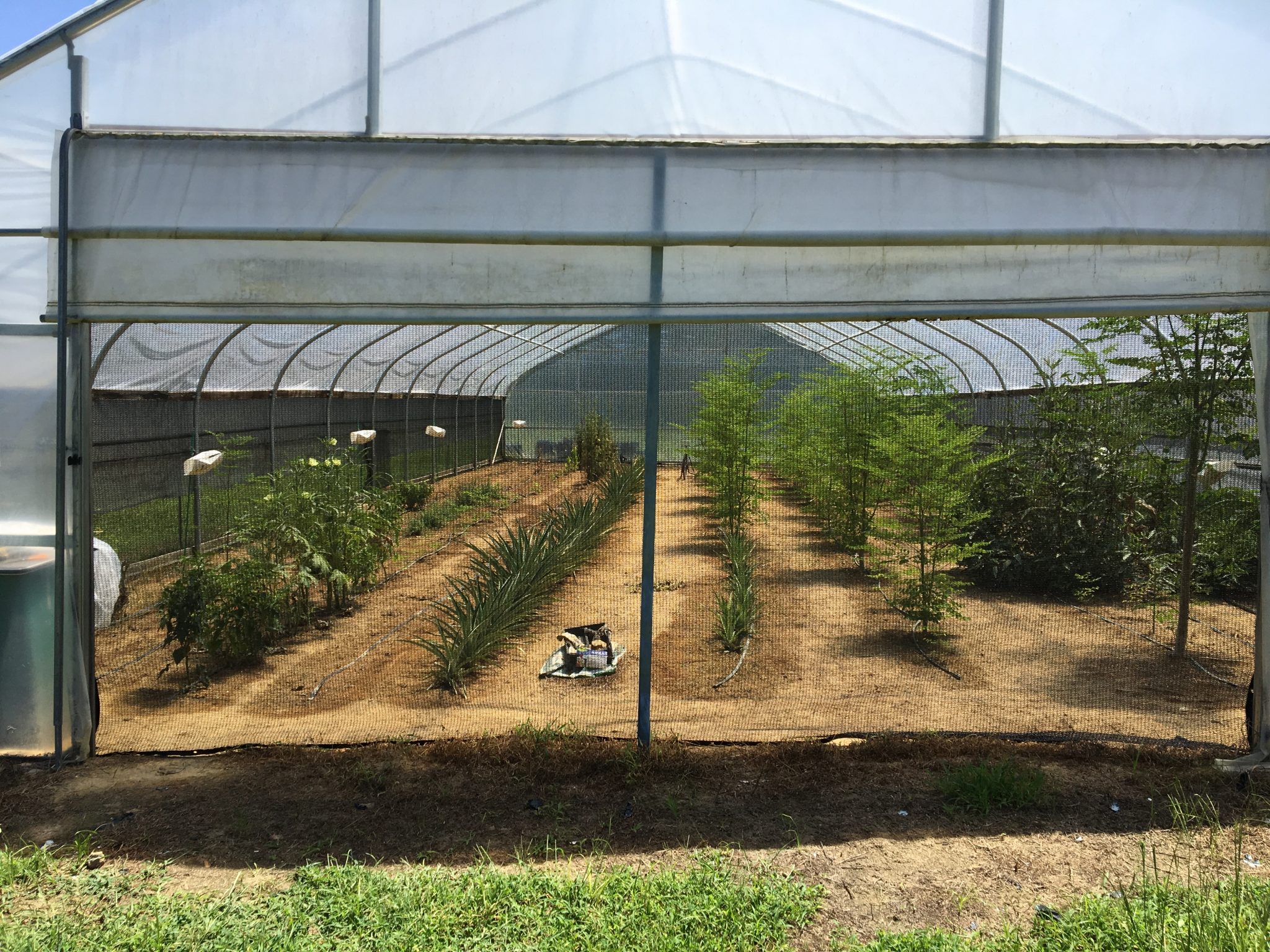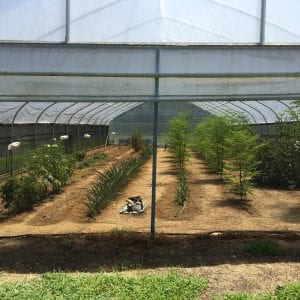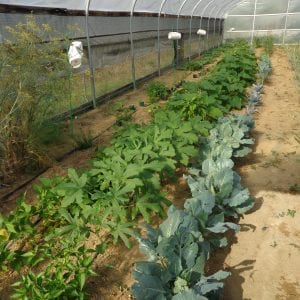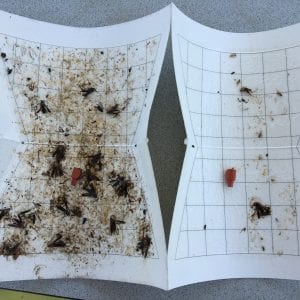Farming

High tunnel pest exclusion (HTPE) systems use woven black shade cloth of specific rating installed under the sidewall plastic and end walls to reduce several major moth species and leaf-footed bugs that regularly devastate vegetable crops.
Pest exclusion is one of the three levels of sustainable pest management that aims at mechanically separating host plants from the herbivore or insect pest. Pest exclusion can be done in two ways. The first is a temporary exclusion system that uses light insect-barrier fabric such as Super-Lite Plant Insect Barrier and Row Cover Pro 19 that is suitable for early season pest management. The second is a pest exclusion system that uses woven netting permanently fixed to high tunnels for year-round insect protection. Producers and gardeners are encouraged to review the pest exclusion videos on the Beginning Farmer Project playlist or the Farming Basics mobile app.
The HTPE project was started in 2014 with the United States Department of Agriculture (USDA) Sustainable Agriculture and Research Education (SARE) program and Alabama Department of Agriculture Specialty Crops Block grant funds. The HTPE system uses woven black shade cloth of specific rating installed under the sidewall plastic and end walls (figure 1). This permanent system is designed to reduce several major moth species and leaf-footed bugs that regularly devastate vegetable crops. Currently, 14 on-farm HTPE demonstration locations use a 40 or a 50 percent woven shade cloth from Poly-Tex or FarmTek. Most new on-farm study locations use a 50 percent woven shade cloth with V-openings such as the Poly-Tex vertex shade system because it was more effective at excluding smaller leaf- footed bugs without hampering beneficial insects such as lady beetles. Years 2016 and 2017 were notable to compare the effectiveness of the HTPE system due to drastic differences in weather patterns. 2016 was a drought year, and 2017 was a very wet year with excessive rains across Alabama. Stick-wing pheromone traps were installed inside netted high tunnels and outside to compare moth activity and insect pressure in various environments (figure 2).
- Figure 1. The HTPE system uses woven black shade cloth installed under the sidewall plastic and end walls.
- Figure 2. Stick-wing pheromone traps compare moth activity and insect pressure in various environments.
- Figure 3. Squash vine borers can be reduced using a 50 percent shade cloth.
A summary of findings from HTPE on-farm demonstrations undertaken with specialty vegetable producers is as follows:
- There are remarkable differences between using 50 percent shade cloth in a drought year than in a cool, wet year. In studies conducted in 2016, which was a drought year, and 2017, which was a cool, wet year, the shade cloth successfully stopped cabbage and soybean looper moths by 40 to 97 percent with no outbreaks at various locations. Armyworm moths were reduced 43 to 70 percent. There have been no tomato hornworm issues inside the tunnels since the moths are very big and cannot go past the 50 percent shade cloth. This system makes vegetable production very profitable inside the netted tunnels.
- Producers interested in growing squash and other cucurbits inside the tunnel should know that squash vine borers (figure 3) can be significantly reduced using a 50 percent shade cloth. A 40 percent shade cloth allowed honey bees to pollinate the crop. For higher grades of shade cloth, producers can use a bumblebee box inside the high tunnel to pollinate cucurbit crops.
- The shade cloth must be tightly installed and clamped on the sides to prevent insects from sneaking in. Many insects such as leaf-footed bugs and armyworms appear to be very good at exploiting any wear and tear in the fabric. Armyworms were seen laying eggs on the fabric at weak places, and small caterpillars then migrated to crops by crawling in. Egg masses should therefore be removed immediately.
- There is a significant improvement in crop quality as a result of reduced caterpillar and sucking insect pest numbers by using a 40 or 50 percent shade cloth around the side and end walls. In a drought year, when insect outbreaks may occur early and pest pressures may be high (as seen in 2016), it is a good idea to use 50 percent woven shade cloth with wide openings to maximize pest exclusion. In a cool, wet year, when the pest lifecycles are delayed and pest pressures are moderate, a 40 percent shade cloth may be sufficient to stop large moths and leaf- footed bugs.
- Since aphids and whiteflies remain a problem in netted tunnels (they are too small to stop), producers can use other light insect exclusion materials such as Super-Lite Plant Insect Barrier or Row Cover Pro19 along with beneficial predators and parasitoids to prevent colonization.
- Thus far, only black shade cloth has been evaluated since it is very commonly used and readily available. Custom cut and finished woven fabric is available at 26 to 50 cents per square foot from Poly-Tex. Check with your local vendors for material availability.
Producers can also refer to two HTPE bulletins on SARE Southern where preliminary research data was reported along with basic information on integrated pest management (IPM) tactics. Contact the author or a commercial horticulture regional Extension agent for implementing a cost-effective IPM plan based on pest exclusion for your farm or garden. Keep detailed records of your successes and challenges to share with Extension personnel. For more information, see the following videos on the Alabama Extension YouTube channel:
- Low-cost Net Houses for Community Gardens and Urban Farms
- Introduction to High Tunnel Pest Exclusion
- HTPE System for Leaffooted Bug Control
- High Tunnel Pest Exclusion System
 Ayanava Majumdar, Extension Entomologist, Professor, Entomology and Plant Pathology, Auburn University, and State SARE Program Coordinator
Ayanava Majumdar, Extension Entomologist, Professor, Entomology and Plant Pathology, Auburn University, and State SARE Program Coordinator
New May 2021, High Tunnel Pest Exclusion System for Specialty Crops, ANR-2722




